There’s actually a town in Texas called Bug Tussle. I’ve been through it. I almost missed it because I blinked. I’ve wondered about the origins of that name ever since I spotted it on a map.
This week, I got to witness a real life bug tussle (or at least a bee wrassle) in the garden. It’s funny to think of the residents of that little Texas town having so little to do that they find a bug fight significant. I am sure in real life they are working hard and busy raising families just like people everywhere else. But, here I am, blessed with all kinds of options, and this is just the kind of entertainment I seek out for my favorite kind of fun—watching bugs fight.
First, I have to say that I know these are not the true bugs. Bees are in the order Hymenoptera, and the True Bugs are in the order Hemiptera. I’m calling them bugs today anyway—as in “There are so many bugs in my garden!” And maybe, just maybe, so I can use that title.
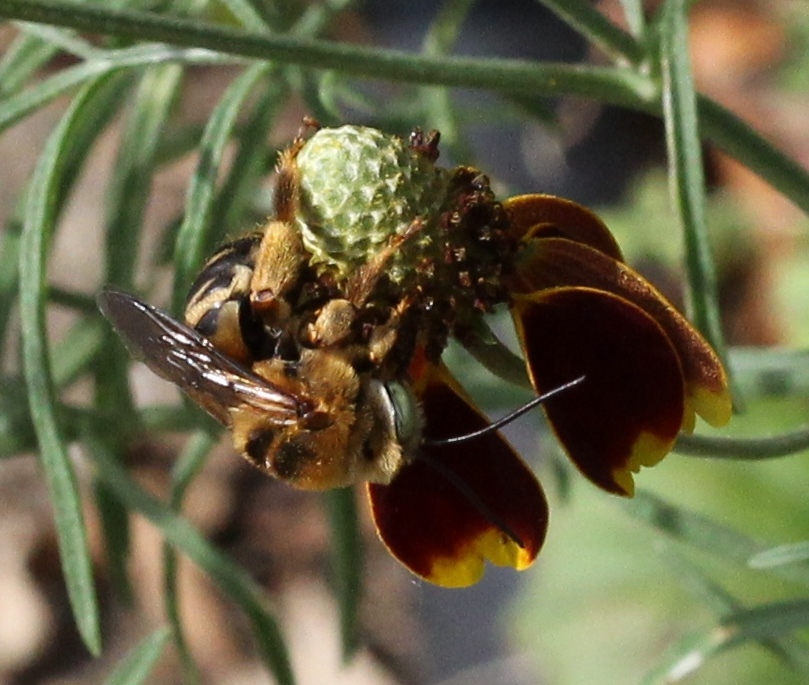
I was photographing a beautiful male Sunflower Bee, Svastra obliqua, on my Mexican Hat, Ratibida columnifera.
How do I know it’s a male? It has green eyes (not deep gray), Yelow face patch, longer antennae (the females have shorter ones), and fuzzy but not enormous hairs on its back legs. Here’s a female for comparison.
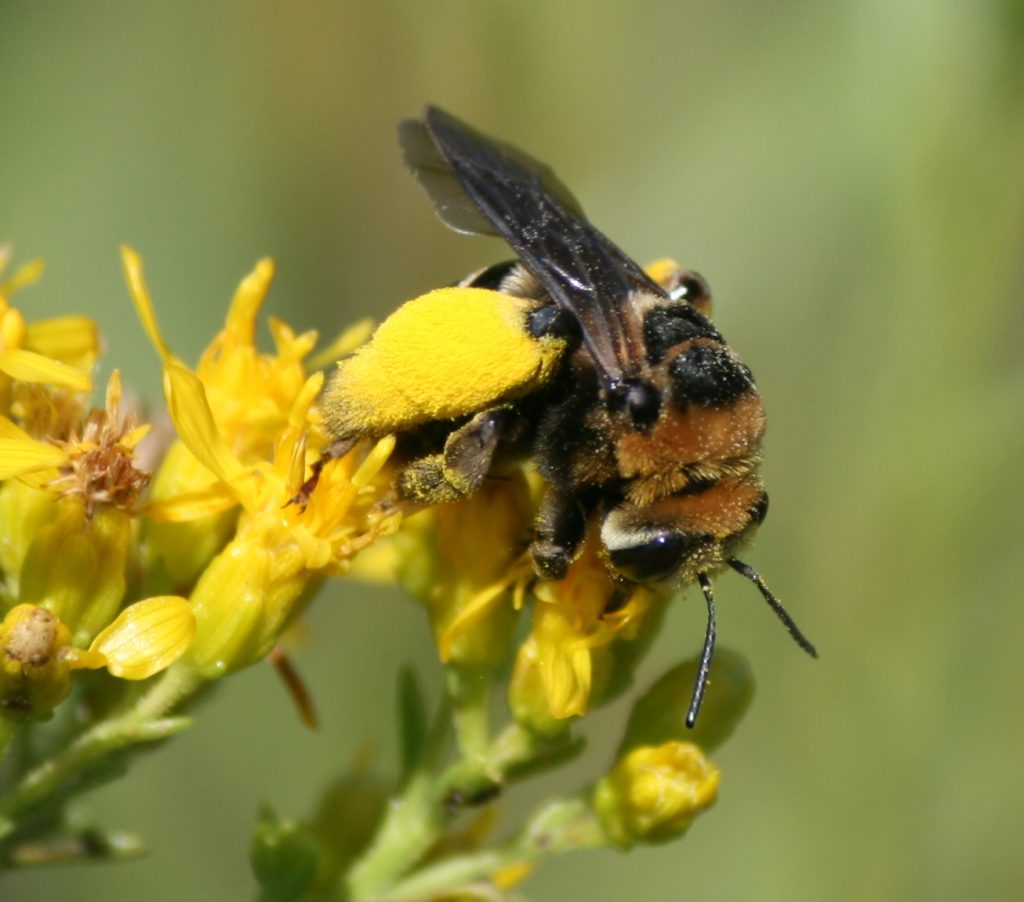
Suddenly, through the viewfinder another insect came bombing into view and latched right on to my subject. The two wrestled for several seconds, and I snapped photos as fast as I could, not able to see any detail until the photos were enlarged. The second bee was another male of the same species. They looked like twins.

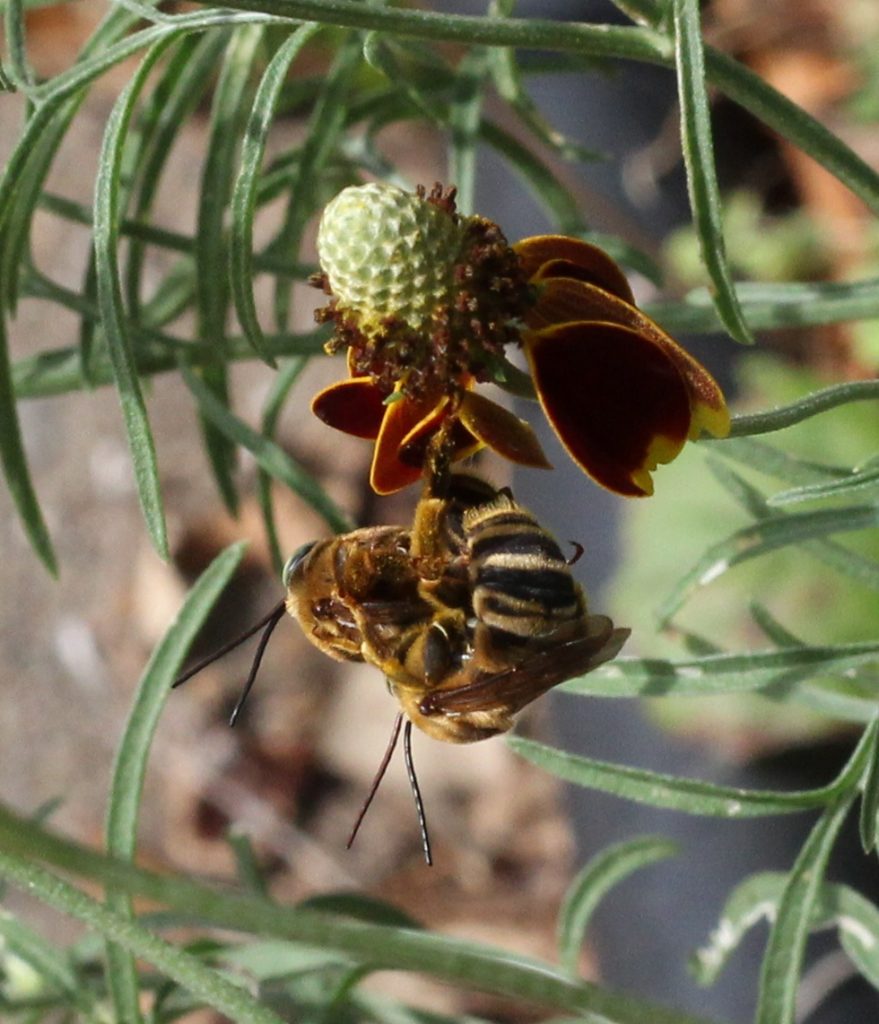
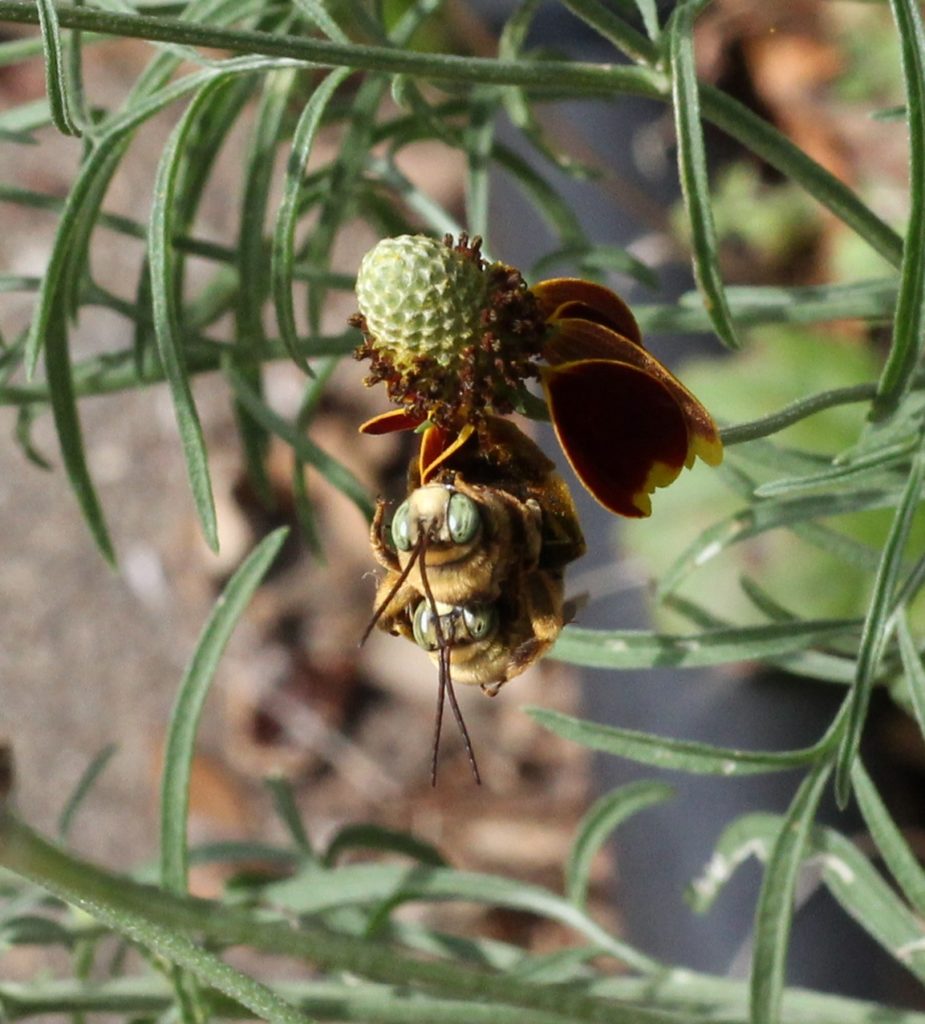
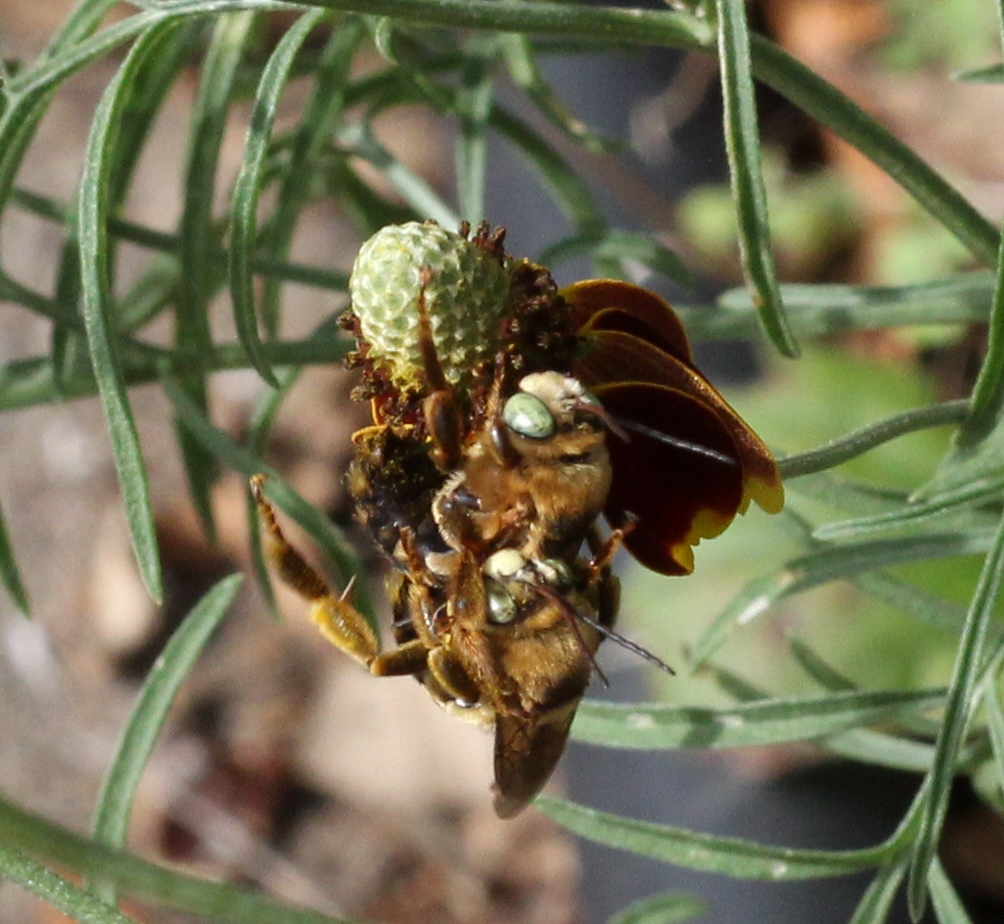
I suspect it was a territorial battle and not a failed mating attempt. Males of native bee species often choose patches of flowers to stake out, and they wait there for receptive females. Bees in the genus Svastra are specialists and must collect the pollen of Sunflowers and related species in the family Asteraceae to feed their young. Nothing else will do, so when the males find a likely patch, they defend it from rivals. No male bees have stingers, so it’s not a deadly battle when two males clash. Victory is defined when one leaves.
I have no way of knowing which bee was the interloper in this case, and who got there first to stake a claim, but I don’t really have to know. The bees sorted it out, like they always do, and one stayed while the other left.

It’s cheap entertainment for me but very serious to the bees, and the outcome may determine the genetic future of bees in this area. It’s only step one in successfully passing on his genes. He’ll still have to evade predators and mate with a female to truly win. The loser of this battle may still win the war. A spider, Praying Mantis, bird, or lizard may get to play a part in deciding who ultimately wins.